It looks like flat-leaf parsley, has a clean “green” flavor like parsley, belongs to the same family (Apiaceae) as parsley and is sometimes called wild Japanese parsley, but mitsuba (Cryptotaenia japonica) is a distinct herb that’s often used in Japanese and Chinese cooking.
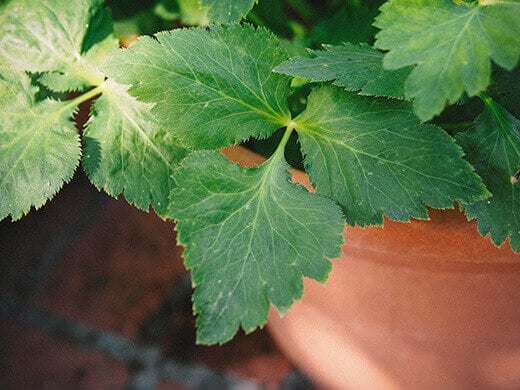
Mitsuba means “three leaves” in Japanese and refers to the way the leaves grow on tall, skinny stems — very similar to my Giant of Italy parsley. The trefoil leaves are large and tender, with a subtle flavor that I can only describe as a cross of parsley, celery, and maybe a hint of cilantro.
Intrigued? So was I when I first learned about it, so I seeded a few plants a few years ago and found the herb to be a light, refreshing garnish for non-Asian dishes as well.
Mitsuba is usually added to soups, salads, and stir-fries, and often raw since heat tends to bring out its bitterness (or degrade the flavor altogether). I chop up the leaves and stems to use fresh, but the roots and seeds of mitsuba are also edible.
The herb is a hardy perennial plant in mild climates and grows as a cut-and-come-again herb. I never let my mitsuba flower, but it reseeds easily if treated as an annual crop. To harvest, I wait for the stems to grow 6 to 8 inches tall, then give them a haircut straight across at soil level. This encourages more stems to grow, rather than just picking off the leaves. (Don’t toss the stems either; they’re soft and succulent, and not at all stringy like parsley sometimes is.)
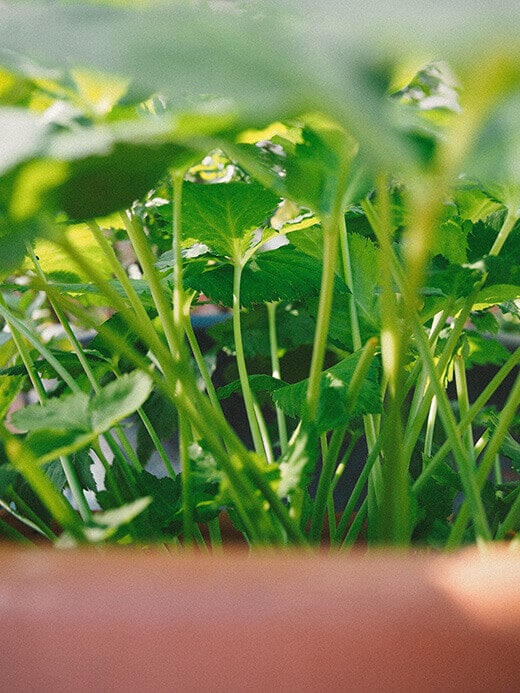
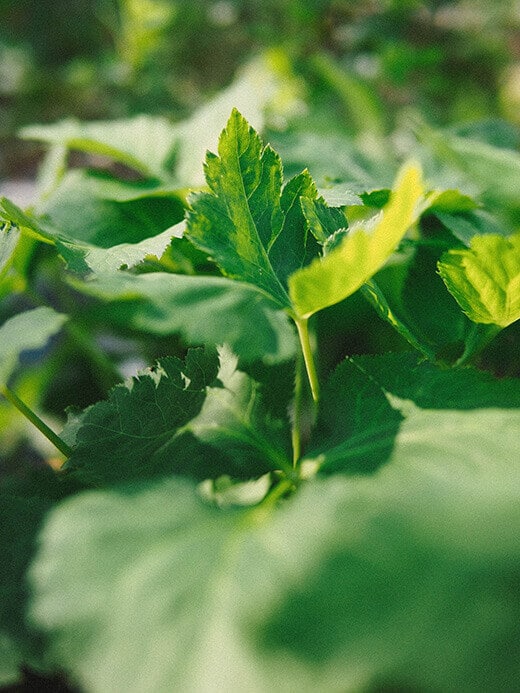
Mitsuba grows wild in Japan (hence it’s often called wild Japanese parsley) and in its native woodland habitat, the herb can grow up to 3 feet tall. In most gardens, however, it reaches 1 to 2 feet in height. In my own garden, I grow mitsuba in a large pot and it stays bushy and compact, no more than 10 inches high and 10 inches wide (which is more than enough for harvesting — a little goes a long way with this herb).

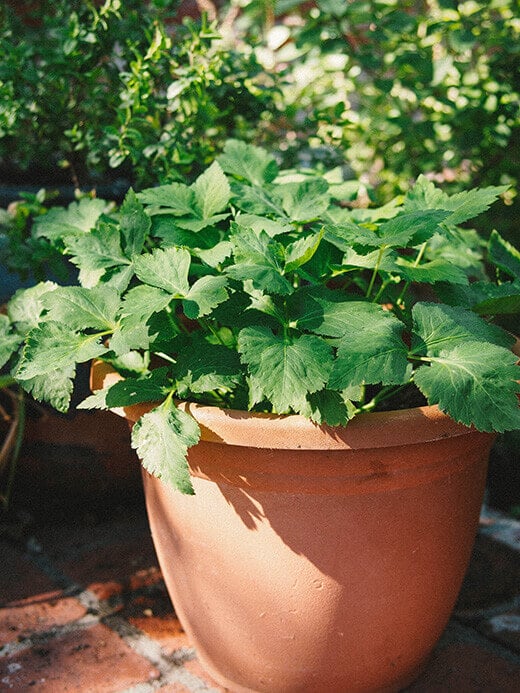
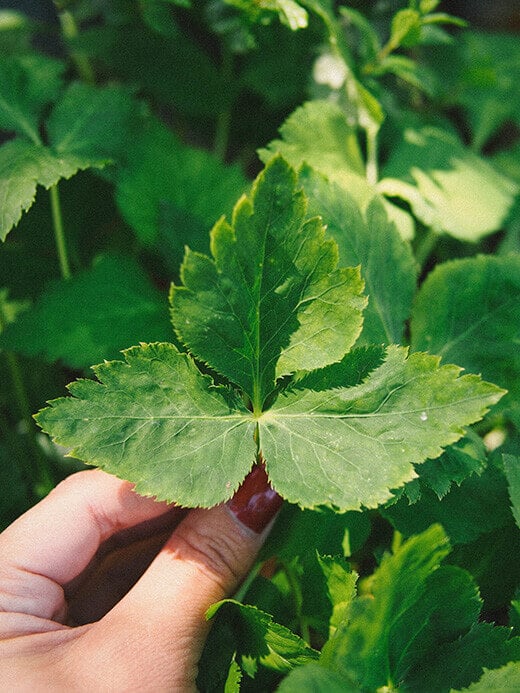
Since the leaves stay lush and green year-round, mitsuba makes an attractive container plant. New growth is light green, turning darker as the leaves mature. It likes moist, shady conditions; too much sun can actually cause the leaves to yellow. It grows best in full to partial shade, or in the shadow of taller plants and trees. If you’ve ever lamented the fact that your yard or your windowsill lacks enough light, this is your plant!


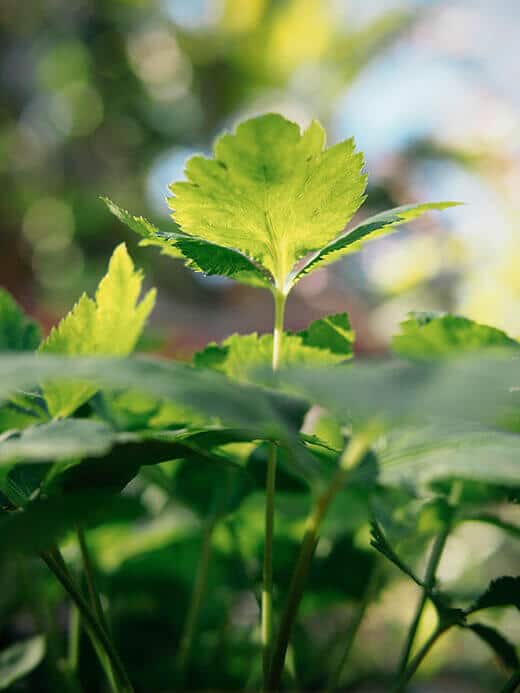













I like Mitsuba way more than other parsley varieties, because of its mild, unobstructive aroma. I want to give planting it a try, but was worried the conditions weren’t favorable (it is, after all, native to Japan). But your article gave me all the information and assurance I need to start planting. Thanks a bunch.
You’re welcome! It grows so easily with moderate watering and care.
Hi, thanks for the info.
I sowed some seeds 12 days ago and still no sign of them sprouting. Is that normal or should I re-sow?
If you’ve provided all the ideal conditions for germination but still no sprouts, it wouldn’t hurt to sow a few more seeds to determine if you need new seeds.
Thank you for your reply!
They actually germinated eventually but I accidentally trampled them… So I sowed again.
Try hydroponic growing. Two weeks and you will see growth then 45 days and ready to enjoy
Did I miss how to find the seeds?
Hi, the link is above in the post but I got my seeds here: http://www.kitazawaseed.com/seed_032-81.html
Have you ever tried this variety?
http://t.co/6wO8L2A341 http://t.co/4jOAFgs6nv
Have you ever tried this variety?
http://t.co/dHHTVNHT6R http://t.co/zReFMwTGkd
Blogged on Garden Betty: Mitsuba: The Japanese Parsley http://t.co/809l3E9bMe < TY for RT! @LovelyGreens
A light-tasting herb that hints of parsley, celery, and cilantro. Mitsuba: The Japanese Parsley http://t.co/tphPuSMe5q #gardenchat
Tough growing conditions? This herb thrives in moist, shady areas. Mitsuba: The Japanese Parsley http://t.co/aFn1OcNJh9 #gardenchat
A shade-loving herb that makes a light, refreshing garnish. Mitsuba: The Japanese Parsley http://t.co/mQjXQQVSt2 #gardenchat
This herb is like a cross of parsley, celery, and a hint of cilantro. Mitsuba: The Japanese Parsley http://t.co/r7y9Xdg5F4 #gardenchat
Looking for a new herb to grow? Try this variety. Mitsuba: The Japanese Parsley http://t.co/kTI8JYgZgn #gardenchat
Sounds like a wonderful herb to grow. Does it have many of the same culinary uses as a flat variety?
I wouldn’t say you could use mitsuba anywhere you’d use parsley, but it IS a good garnish for many different dishes, and even ones where parsley may not be considered. I only use mine fresh and raw. So far, I’ve found it delicious on (or in) Asian noodles, rice bowls, summer rolls, green salads, veg soups, and grilled meats… which nearly covers all my favorite foods. 😉
RT @theGardenBetty: Blogged on Garden Betty: Mitsuba: The Japanese Parsley http://t.co/809l3E9bMe
Blogged on Garden Betty: Mitsuba: The Japanese Parsley http://t.co/809l3E9bMe